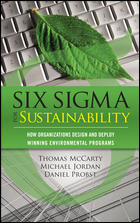If your company intends on using an outside source for your calibration work, sooner or later a choice has to be made from a short list of candidates. The process required to get to that point is relatively simple, but someone who knows the metrology involved needs to be involved. If that turns out to be you, this column will give you some points to consider in the hope you don’t end up with embarrassing surprises at the end of it all.
Deciding what is required is the first step in the process. This may seem a ‘no brainer’ but in practice, this requirement is frequently ignored. It becomes a choice between what you ‘want’ versus what you ‘need.’ If all you want is a piece of official looking paper to wave in front of a quality auditor to show you’ve had the corporate jewels blessed by an independent firm, you can ignore most of this column. On the other hand, if you need assurance that your instruments and gages are suitable for your needs, pay attention—there may be a test at the end of this.
If the latter situation applies, you should obtain accredited calibration so you have some assurance of the lab’s abilities. If your quality system doesn’t indicate otherwise, a lab accredited to ISO 17025 is a safe default choice as it is recognized internationally across all industries. Many other standards for the same purpose are usually customized versions of ISO 17025 that apply to calibration and testing organizations. General quality standards such as ISO 9000 are not the same and while 17025 includes elements from the 9000 series, it is much more stringent.
Before you start contacting labs for information, you have to prepare a list of your equipment they will be expected to calibrate. While this should be a simple task, too often it is poorly done and folks get more questions than answers from responding labs. This is due to vague or incomplete descriptions of the equipment involved. Some folks try to avoid making a list by asking labs for a price list but will get a generic one—if any –in reply. And since this will be just as bad as a vague list from you, head potential discussions, problems and arguments off at the pass and send a proper list to them. Typical of a vague description occurs often with micrometers.
What could be simpler than listing ‘outside micrometers to 20”/500mm capacity? Nothing, but you could get into discussions when the lab discovers that some of them are the interchangeable anvil type after they receive them. A lab may assume you want micrometer zero setting masters calibrated and include that in their price for all those over 1”/25mm in capacity, not knowing that you keep them as separate items in your system and will ask for a quote on them later. Since not all micrometer makers include these masters with their instruments, some companies choose to use their gage blocks for that purpose instead of buying them with the micrometers.
At the risk of beating the poor micrometer to death, a list that includes ‘inside micrometers’ and a range is going to be too vague when it turns out that some of those instruments are the three-anvil type rather than the stick type.
You can see from this brief excursion into list making that you cannot be too detailed if you want to avoid problems later. If you are having difficulty describing some of your equipment in a generic way, take the easy way out by referencing the make and model number, or one that is similar. Example: Inside micrometer, similar to Brand X, 123 series.
Generic descriptions can become too generic to be helpful, however. ‘Setting master’ is one of those than means different things to different people. I’ve seen the term used for what is essentially a plain ring gage, a setting jig with parallel jaws for bore gages or a gap gage used for the same purpose. I’ve seen it used properly for discs and rods for outside micrometers but also for masters used for thread micrometers which are rod like but have a cone on one end and a vee groove on the other.
If you’ve digested the foregoing and are ready to move on, my next column will look at how you compare one calibration source to another.



